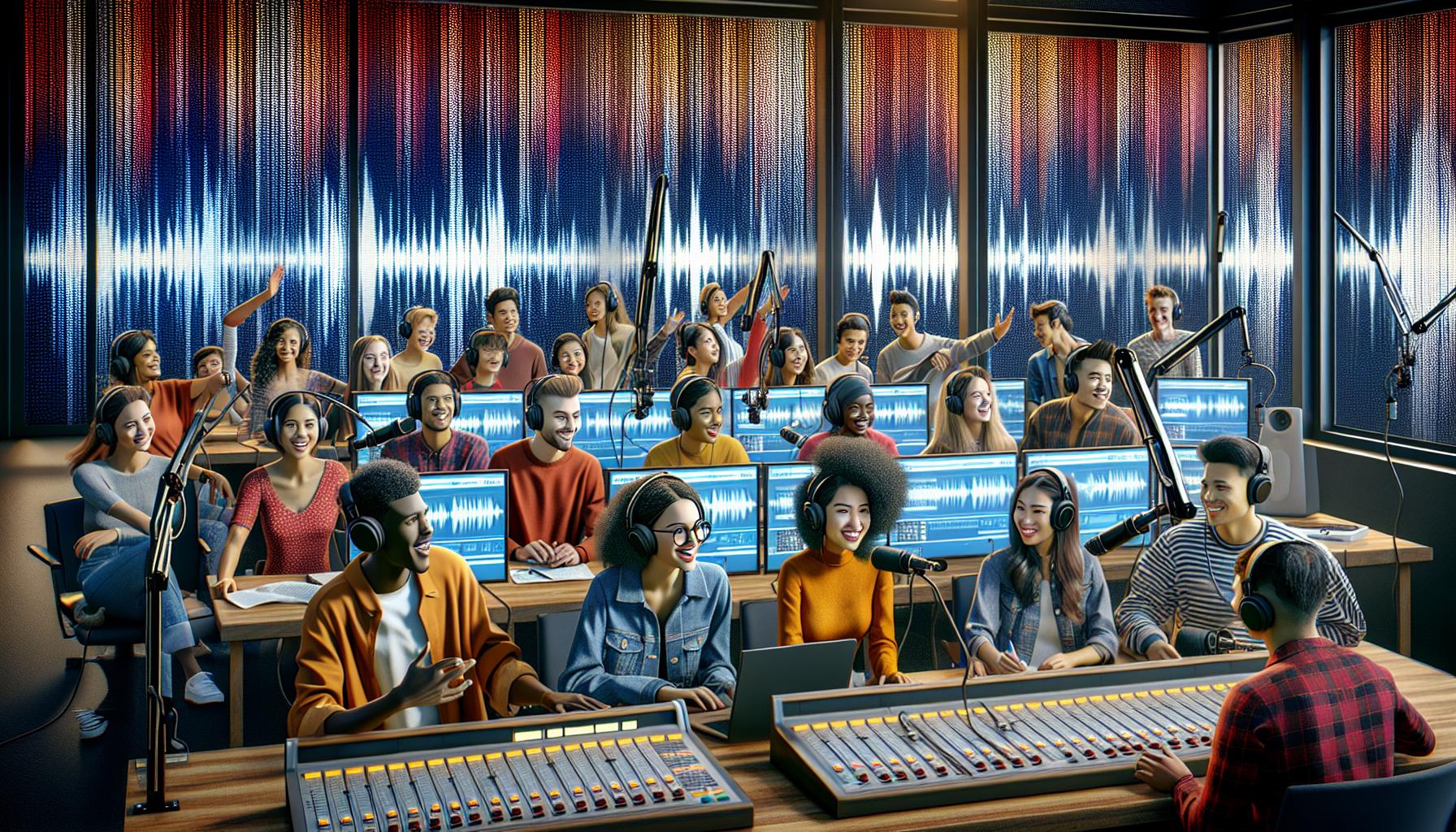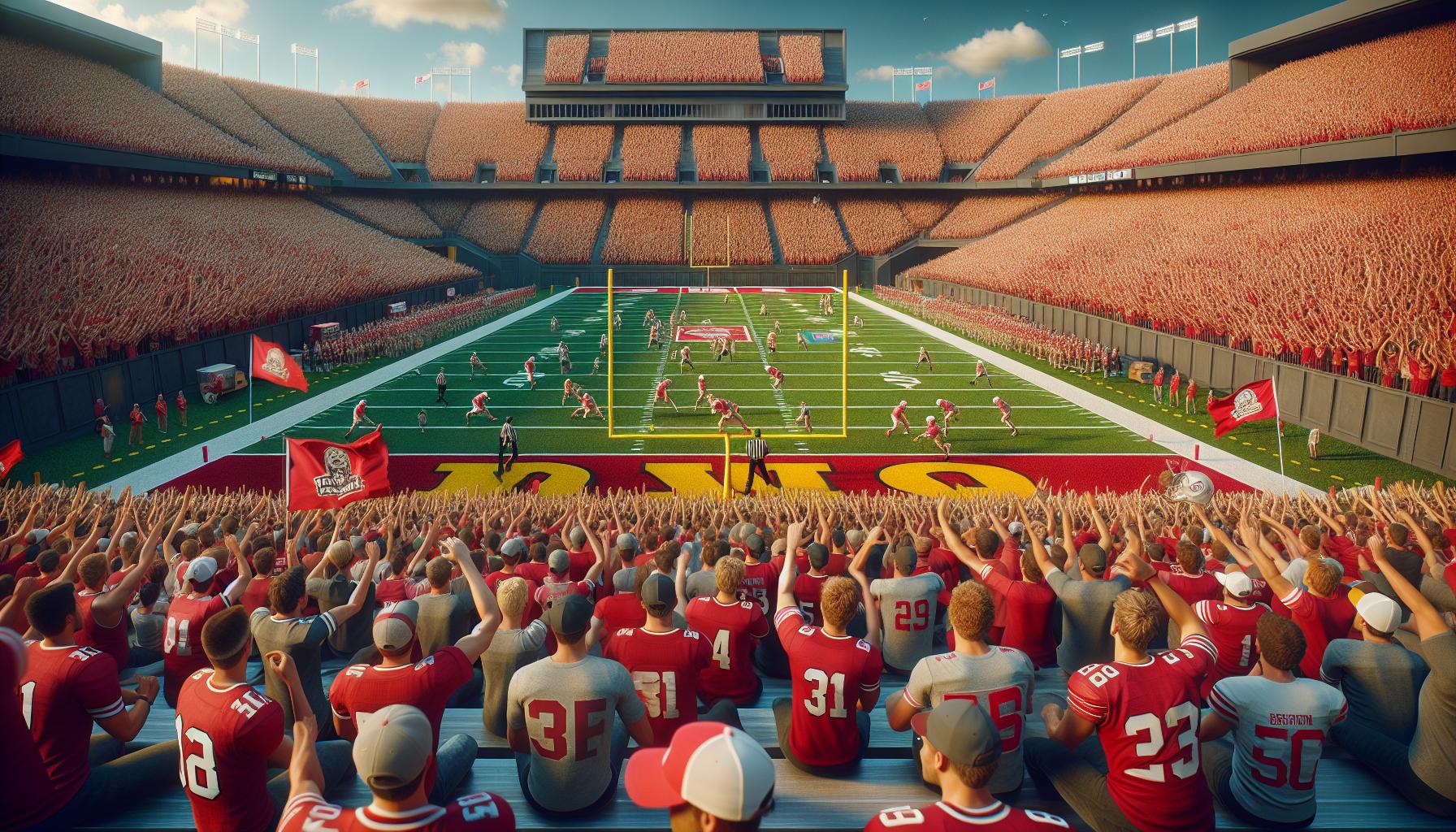Phone:
(701)814-6992
Physical address:
6296 Donnelly Plaza
Ratkeville, Bahamas.

Radio waves have been bringing Ohio State Buckeyes action to life since 1922 when WOSU first hit the airwaves. For nearly a century passionate fans have huddled around their radios to catch every thrilling moment of Buckeye sports entertainment and campus news.
Today Ohio State radio encompasses a diverse network of stations broadcasting everything from play-by-play sports coverage to student-run programming. The iconic Ohio State Radio Network reaches millions of listeners across the Buckeye State while WOSU continues its legacy as one of America’s oldest college radio stations. Whether it’s through traditional AM/FM broadcasts or modern digital streaming these stations keep fans connected to their beloved scarlet and gray community.
Ohio State’s radio broadcasting legacy spans over a century, marking significant achievements in collegiate communications. The evolution of OSU radio demonstrates the university’s commitment to innovative media outreach.
WOSU radio launched in 1922 as WEAO, operating from a small engineering lab on campus. Professor Roy Bowen partnered with the Department of Electrical Engineering to establish the station with a 100-watt transmitter. Initial broadcasts included agricultural reports, educational lectures from faculty members. By 1925, the station expanded its programming to include live music performances from student ensembles. The university secured an FCC commercial license in 1933, adopting the WOSU call letters listeners recognize today. Regular broadcasting hours increased from 3 hours to 12 hours daily by 1935.
The first live Buckeye football broadcast aired in 1925 from Ohio Field. WOSU pioneered educational programming in 1929 by launching “School of the Air” reaching 100,000 Ohio students. The station moved to a dedicated facility in 1951 at West 17th Avenue. Installation of an FM transmitter in 1949 expanded coverage to most of central Ohio. WOSU established National Public Radio affiliation in 1970 becoming one of its founding members. Digital broadcasting began in 2003 with three HD Radio channels. The network expanded to 67 affiliate stations across Ohio by 2010.

WOSU Public Media operates as Ohio State University’s primary radio broadcasting service. The station maintains studios at 400 West Town Street in the Columbus Gateway Center.
WOSU broadcasts three distinct radio services: 89.7 NPR News features news programming 24/7 with in-depth coverage of local events. Classical 101 WOSA delivers classical music programming reaching central Ohio listeners. WOSU All Sides Radio presents talk shows focusing on community issues educational content public affairs discussions. The station produces original content including “All Sides with Ann Fisher” “Classical 101 By Request” regular features about Ohio State research discoveries. NPR programming includes “Morning Edition” “All Things Considered” “Fresh Air” complementing local productions.
WOSU’s transmitter network extends across central Ohio through strategic placement of broadcast facilities. The main 89.7 FM signal reaches a 40-mile radius from Columbus serving 22 counties. Classical 101 WOSA transmits from a separate facility expanding coverage to Delaware Marion Knox counties. Digital broadcasting technology enhances signal clarity for both channels. The station maintains translator stations in Chillicothe Portsmouth enabling access to WOSU programming in southern Ohio communities. Combined coverage reaches 2.1 million potential listeners across 12,000 square miles of broadcast territory.
| Signal Coverage Stats | Metrics |
|---|---|
| Main Signal Range | 40 miles |
| Counties Served | 22 |
| Potential Listeners | 2.1 million |
| Coverage Area | 12,000 sq miles |

The Ohio State Football Radio Network broadcasts live coverage of Buckeye football games across 67 affiliate stations in Ohio. This extensive network ensures comprehensive coverage for millions of Ohio State football fans throughout the state.
The radio network’s legacy began in 1925 with the first live broadcast of a Buckeyes football game. Paul Hornung pioneered Ohio State football broadcasting in the 1950s, establishing signature play-calling techniques that influenced future generations. Legendary broadcaster Jack Buck called Ohio State games during the 1960s, bringing national recognition to the network. WBNS Radio served as the flagship station from 1984 to 2019, marking a 35-year partnership that solidified the network’s prominence. The broadcast team captured historic moments including Ohio State’s national championship victories in 2002 against Miami and 2014 against Oregon.
Paul Keels leads the current broadcast team as the “Voice of the Buckeyes” since 1998. Jim Lachey serves as color analyst, providing expert commentary from his experience as a former Ohio State All-American. Sideline reporter Matt Andrews delivers real-time updates from field level during games. The network reaches 67 affiliate stations across Ohio with pre-game coverage starting 4 hours before kickoff. Game broadcasts include comprehensive pre-game analysis, live play-by-play coverage, halftime features, post-game interviews and fan call-in segments. Digital streaming options extend coverage to mobile devices through the Ohio State Buckeyes app.
Ohio State University provides comprehensive radio broadcasting experience through student-focused programs at WOSU. Students gain hands-on experience in professional broadcasting while developing essential media skills.
WOSU offers structured training programs for students interested in radio broadcasting careers. Students participate in 12-week internship rotations across news production, on-air hosting, audio engineering. Interns work directly with professional staff mentors to develop skills in script writing, audio editing, broadcast equipment operation. The station provides specialized workshops in voice training, interviewing techniques, digital audio production. Radio journalism students cover campus events, produce news packages, create feature stories for broadcast. Advanced interns take leadership roles in program planning, live broadcast coordination, production team management.
Students manage daily operations at Underground Radio, Ohio State’s student-run station. The station broadcasts 24/7 from the Ohio Union, featuring music programs, talk shows, sports coverage. Student directors oversee programming schedules, equipment maintenance, talent recruitment. On-air shifts give students practical experience in live broadcasting, playlist curation, audience engagement. The production team creates original content including podcasts, promotional spots, public service announcements. Underground Radio provides coverage of student organizations, campus performances, university events. Technical crews maintain broadcast equipment, manage social media platforms, coordinate remote broadcasts.
Ohio State radio embraces digital transformation through advanced streaming technologies. The integration of digital platforms expands accessibility while maintaining traditional broadcast quality standards.
The Ohio State Buckeyes app serves as a central hub for radio content access, featuring live game broadcasts, exclusive interviews, and on-demand programming. Listeners stream WOSU’s three distinct channels through dedicated mobile applications, reaching 250,000+ monthly active users. The digital platforms include:
Digital innovations reshape Ohio State radio broadcasting through emerging technologies and enhanced listener experiences. Key developments include:
The network embraces cloud-based broadcasting infrastructure, enabling seamless content delivery across multiple platforms. Strategic partnerships with technology providers expand coverage through digital streaming services, reaching audiences beyond traditional broadcast boundaries.
Ohio State radio stands as a pioneering force in collegiate broadcasting with nearly a century of innovations and dedicated service. From its humble beginnings as WEAO to today’s multi-platform digital network it’s evolved while staying true to its educational and community-focused mission. The combination of WOSU’s diverse programming student opportunities and the Ohio State Football Radio Network creates an invaluable resource for millions of listeners.
The future looks bright as Ohio State radio continues to embrace new technologies while maintaining its commitment to quality broadcasting. Through HD Radio smart speaker integration and enhanced digital capabilities it’s poised to serve audiences for generations to come. This blend of tradition and innovation ensures that Ohio State radio will remain a vital part of the Buckeye community’s daily life.